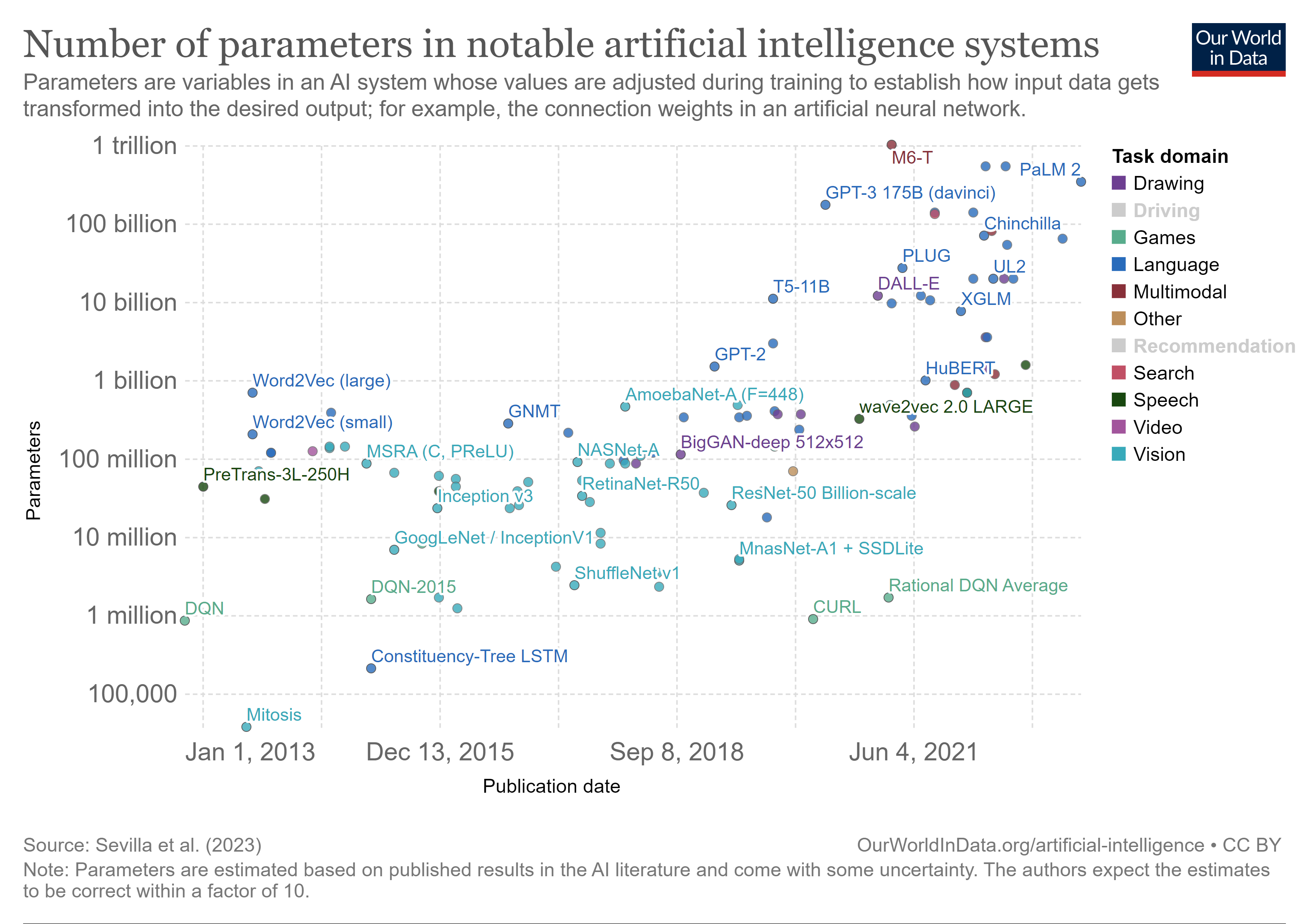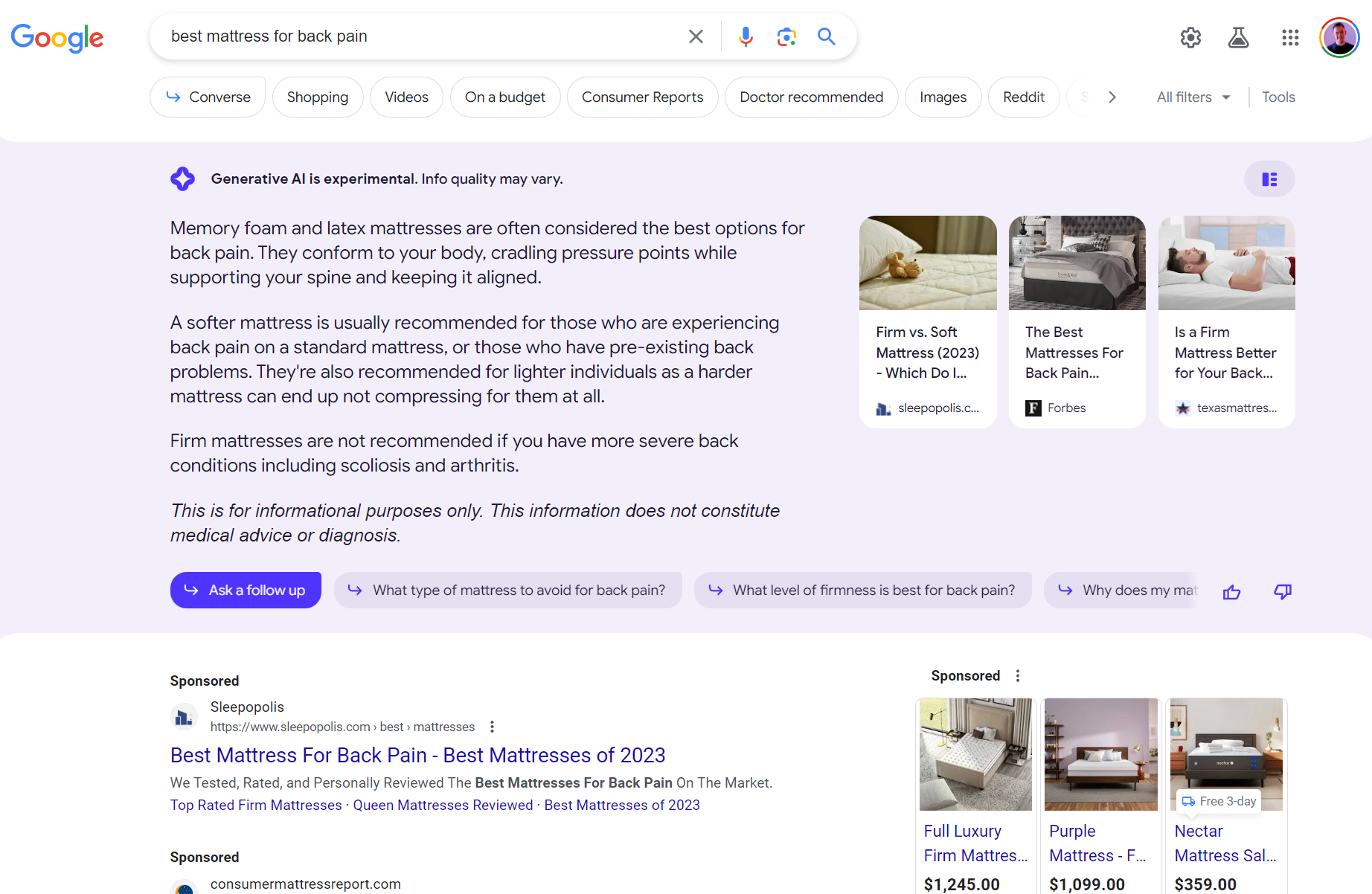Celebrate the Holidays with some of SEJ’s best articles of 2023.
Our Festive Flashback series runs from December 21 – January 5, featuring daily reads on significant events, fundamentals, actionable strategies, and thought leader opinions.
2023 has been quite eventful in the SEO industry and our contributors produced some outstanding articles to keep pace and reflect these changes.
Catch up on the best reads of 2023 to give you plenty to reflect on as you move into 2024.
It’s been a little over six months since Open AI launched ChatGPT and rang in the next age of AI.
Since then:
- Google has introduced Search Generative Experience (or SGE), an AI-powered search beta.
- ChatGPT added powerful search capabilities with the Bing plugin.
- Google launched and improved its own AI chatbot, Bard.
Everyone talks about AI all the time. It’s easy to get tired of it.
But everyone talks about it because it has massive potential and shows utility already.
Lately, though, I’ve noticed the discussions have cooled down a bit.
Not completely, as in “frozen,” but “cooled” because we now understand AI’s capabilities much better after the initial hype phase. We can better place how good AI tools are today.
May was the first month the number of searches for “chat gpt” dropped (-14.2%, according to Similarweb), but total traffic to chat.openai.com is still growing. Mobile traffic seems down, but remember, ChatGPT launched a mobile app.
 Image from Similarweb, June 2023
Image from Similarweb, June 2023Many SEO pros remember how CNET published AI content with wrong information in it.
But creditcard.com and Bankrate published AI content as well.
And at the end of the day, the AI content on these three sites performed just like human-generated content. The PR disaster was big because CNET didn’t fact-check content before it went out.
But that’s precisely the point: We’re realizing we’re not yet at the point where AI content can be published cold. AI can only create dirty drafts, show us exciting angles, and remove writer’s block (maybe some editing steps like fixing bad grammar). For now.
We can see where the road is heading: upward. New models with exponentially higher numbers of training parameters are sprouting up everywhere.
 Image from ourworldindata.org, June 2023
Image from ourworldindata.org, June 2023Notice the logarithmic scale; we’re seeing a wave of AI tools that edit, summarize, and create content of all formats.
It’s inevitable for us to head towards a future where AI lives in every piece of software and fundamentally changes marketing.
Even the biggest AI critics acknowledge that we’re heading towards a future where AI is table stakes.
Everyone – yes, everyone – in the tech space is currently thinking about three questions:
- What will the AI future look like?
- How is it going to affect us?
- What can we do about it?
Let me attempt to answer these three questions for SEO:
The Implications Of Search Generative Experience (SGE)
Recommendations for future-proofing your business don’t make sense without understanding the implications of SGE.
Keep in mind SGE is still in beta. The public version that’s supposed to launch in December might look very different, and we don’t have any data about traffic from SGE yet.
All statements in this piece are assumptions based on what I see in the beta. That said, I spent a lot of time with SGE, and with search engines over the last 13 years.
SGE will likely drive less traffic to most sites ranking for a keyword compared to the current version of search, simply because SGE gives the answer to a query away and could drive searchers deeper into a conversation with Bard instead of to websites.
 Screenshot from search for [best mattress for back pain], Google, June 2023
Screenshot from search for [best mattress for back pain], Google, June 2023SGE is like a Featured Snippet on steroids, with little room for organic results. If you want to get an idea of how much traffic could be at stake, subtract all question queries and PAA ranks from your current organic traffic.
For example, filter your search console queries by the regex “what|why|where|when|how” and calculate the share of non-branded traffic. That’s how much you could lose.
The exception is sites ranking in the carousel on the side. The million-dollar question is whether users will click on the sites or not. My gut feeling says yes.
Even with good answers to the searcher’s question, they might still want to click through to sites to get the full picture, a human review, or a better answer. There is a real chance that most sites ranking for a keyword see less traffic, but sites featured in the carousel see a lot more.
Just like users didn’t abandon Google for Bing when it became the first to show AI answers, users have built trust and habits with certain websites over the years.
So, one assumption to be validated is whether searchers are satisfied with the SGE answer or if they click through to sites for more information.
Different keywords show different formats and degrees of detail in the AI answer, which leads to the question of which industries will be hit the hardest by SGE.
Pre-AI, Google struggled to answer longtail queries well. Large language models (LLMs) and generative AI solve that problem.
They match results with classic web search results to reduce hallucination and fact-check AI answers, which works especially well for informative queries. As a result, companies that monetize traffic volume across all stages of the user journey will be hit the hardest: publishers and affiliates.
Retailers, direct-to-customer (DTC) brands, and local businesses might have it even harder since Google jumps straight to a list of products/businesses unless the search query contains a question (other than “best”).
Together with GoogleTest to connect the Google Merchant Center directly to your checkout, Google is likely building a marketplace to compete head-on with Amazon.
For the first time ever, the YMYL (your money or your life) space might have it easier to drive organic traffic than others. Why? Most YMYL spaces are heavily regulated, and AI answers might fall into advice, which is forbidden without a license.
I don’t assume Google wants to take that risk and might stay out of them completely or until it finds a better solution.
Even though we’ve seen examples of SGE answering sensitive YMYL questions in the beta, I’m less confident it will do so in the public version.
Since SGE looks and works so differently from the current version of Search, the data we work with in SEO won’t be as useful anymore.
There is a chance that Google will update GSC with SGE-related data or provide us with a new tool altogether. But if not, we’ll miss a ton of ranking data that helps us reverse-engineer how results come together right now.
How Businesses Can Set Themselves Up For Success
Better solutions will surface once SGE comes out of beta, and we all have more time to digest its impact and final version.
Until then, we can make assumptions about future-proofing based on what we see so far.
1. Build Optionality With Direct Traffic
Direct traffic is the strongest sign of popularity – often the best-converting traffic – and it can provide optionality when organic traffic breaks away.
There are several ways to build direct traffic:
- A great experience with your product: outstanding customer service, quick onboarding, and high engagement.
- Strong positioning and messaging.
- Advertising.
- Content.
2. Source New Ways To Learn What Your Customers Are Searching For
Search volume is a curse and a blessing. It has been flawed for a long time.
Rather run experiments in paid search to see how well a keyword could convert.
Since it’s unclear whether we’ll still get demand metrics like search volume or visibility metrics like keyword ranks to learn what users want and what works in SEO, we need other ways to source what customers are looking for.
One of the best is talking to customers about their user and search journeys.
For example, someone in the market for a mattress might have specific needs like reducing back pain. So, they might search for “best mattress for back pain,” “best mattress for back pain and sleep apnea,” or “can a mattress help with back pain.”
If you can’t talk to customers and prospects directly, query sales or support call transcripts with AI (tools like Humata allow you to do that).
3. Create Content Machines Cannot Replicate
Two things AI cannot replicate are experience and expertise. The latter might be doable for AI at some point later down the road, but not for now.
Even if machines could replicate experiences at some points, humans might be more interested in the experiences of other humans.
Today, you can think about what keywords and topics have a high intent for experiences.
Travel guides are an obvious example, but even in product reviews or when describing a problem, you can emphasize the experience.
Who writes the content is already important but might become even more critical. Some authors are so deeply connected to a topic that no generic machine could replace them.
Think about Dr. Andrew Huberman writing about supplements, Tim Ferriss about self-improvement, or Henry Kissinger about diplomacy.
Companies need to ask themselves how they can bring the best author for their topics on board – and maybe monopolize their content. I wouldn’t be shocked if companies exclusively license some experts’ content down the road.
4. Find The Right Angle
Topics have different angles, like pros and cons, differences between similar topics, or who they’re for.
Since SGE highlights specific angles about topics (we don’t know why and the logic behind these angles might get more sophisticated), companies must get good at either covering all angles in their content or efficiently finding out which one Google prefers for a target keyword, and adjusting content accordingly.
Angles are different from sub-topics. They’re a view on the main topic and its nested subtopics. Companies should work on including angles in their content today.
5. Accelerate Your Work With AI
AI goes both ways. It changes search but also how we work. The biggest advance – so far – is in speed.
Experts working at integrators – companies that have to create content themselves to drive organic traffic – can create first drafts within minutes and spend more time editing and giving a piece their personal touch and expertise.
They can then use AI to challenge the article, find new angles, and remove gaps. They might even use good prompts to refresh and tune content on a regular basis.
Experts at aggregators – companies that leverage UGC or product inventory to scale SEO – can develop clever prompts to fill thousands or millions of pages with little pieces of information based on their own or public data.
Data from APIs can be contextualized and presented in a much better way.
Conclusion: AI Goes Both Ways
The rise of AI came slowly and then quickly.
Now, we’re reaching “cruising altitude” and starting to better understand where AI is effective and where it is not.
I speak to many in-house and agency teams.
When I ask them how often they use AI, I see a lot of blank stares. Many have never tried it. That’s a grave mistake.
Complete abstinence guarantees that you build opinions based on hearsay and headline reading.
The best way to future-proof your business is by staying engaged with AI, pushing the boundaries, and trying new things.
